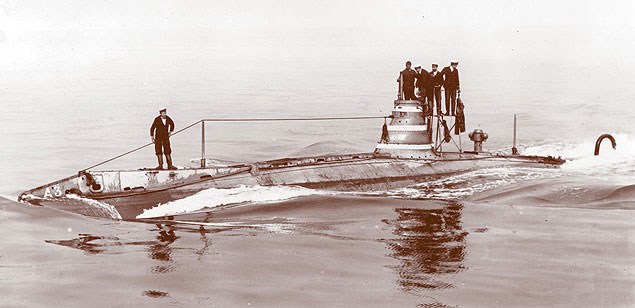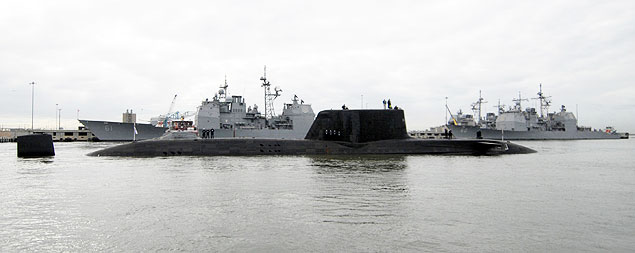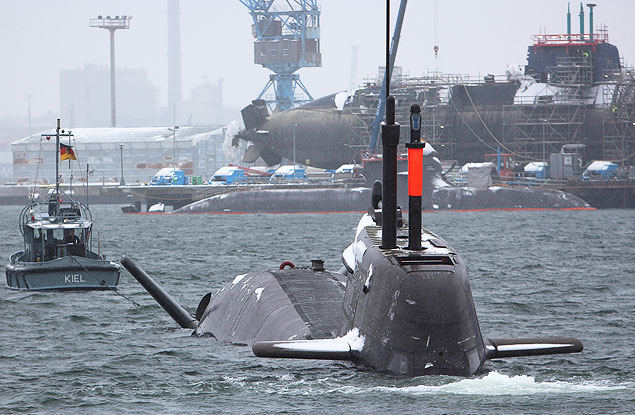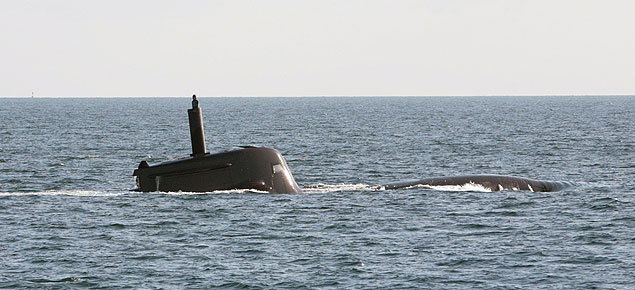Cold War game provides some serious insight
Guest blogger Dennis Andrews takes a look at a submarine warfare board game that benefits hugely from an inside perspective on real front line operations.
‘They Come Unseen’ (Osprey Games, £39.99) features a contest between NATO and the Soviet Navy – with the maritime forces of the West and Russia again squaring up for shadow games at sea it has gained added piquancy.
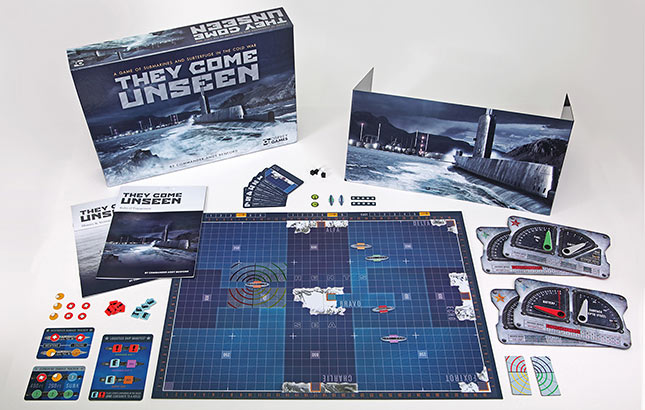
The components of ‘The Come Unseen’. Image: Osprey Games.
The game’s creator is former submarine captain Andy Benford who conceived it after devising a prototype in 1974, while Navigating Officer aboard the Porpoise Class conventional submarine HMS Grampus. Various submariners road tested the first version of the game, ‘Submarine’, while actually at sea on patrol to counter the Soviets. Further developed over time, and now with Osprey’s involvement, it is probably one of the best naval strategy/tactics board game that is neither a simulation nor computer-based ‘shoot them up’.
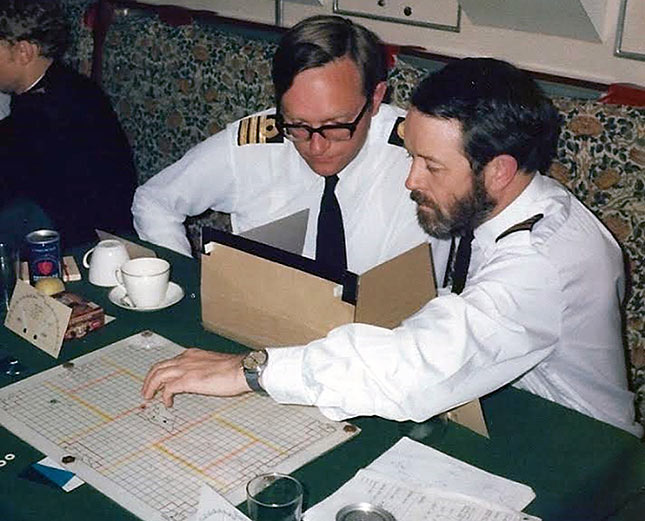
The prototype of ‘They Come Unseen’ being put through its paces by two officers in the wardroom of the nuclear-powered hunter-killer submarine HMS Sovereign during the late 1970s. Photo: Used courtesy of Andy Benford.
Two or more persons can play (up to a maximum of five). A pair of conventional diesel-powered hunter/killer submarines represents the NATO force while the Soviets field two destroyers and three support ships. Each vessel is represented in play by a simple piece occupying a single square on a grid. The same grid is marked out on two separate boards, one smaller than the other. These are the Main Board, which charts surface activity, and the Deep Board, where submarines that have dived below periscope depth manoeuvre. On reaching ‘periscope depth’ again the NATO players return to the Main Board. The Deep Board is only visible to NATO players and to conceal submarine movements from prying eyes a card shield is provided (a bit like the technique used in ‘Battleships’ to hide opponents’ units from each other).

The rules booklet for ‘They Come Unseen’.
Set in the Barents Sea, where the Russians are depicted as possessing six Ice Stations on various land bases, the scenario for gameplay puts the Soviets on the verge of a breakthrough with the development of nuclear-powered submarines.
The NATO mission is to deploy two submarines and seek out the Ice Stations while destroying four of the six by landing Special Forces wins the game. Both sides are keen to avoid nuclear war, so outright aggression is denied – but maybe a submarine goes missing at sea? After colliding with a so-called ‘iceberg’?
That surely never happened!?
Soviet players win the game by sinking the two NATO submarines while movements across the board are taken in turn, with Rules of Engagement (RoE) provided in two accompanying booklets. While easy to understand, novice players may need to keep referring to the RoE until familiar with gameplay.
The literature that is part of the package provides some excellent insights into submarine operations by the Royal Navy during the Cold War (including a chapter on strategy and tactics). This provides ideas for complex moves in play.

Cold War cat and mouse: The masts of a Victor Class attack submarine of the Soviet Navy, which has just dived having been caught on the surface. Photo: US DoD.
‘They Come Unseen’ is a great game of cat and mouse where, even with the best of tactical efforts and sharpest of minds, nothing is certain. The vagaries of weather and temperature layers in the sea are the unpredictable factors that slew the outcomes.
It all gains enormously from real-life experiences of its creator who, during his naval career also commanded the Australian submarine HMAS Oxley and was second-in-command of the British nuclear-powered Polaris ballistic missile submarine (SSBN) HMS Revenge.

The Australian diesel-electric patrol submarine HMAS Oxley, which was in the early 1980s commanded by Andy Benford, creator of the game ‘They Come Unseen’. Photo: RAN.
The ‘History and Strategy’ booklet by Benford is a fascinating read on its own while ‘They Come Unseen’ itself takes us back to the golden era of complex and mind-bending strategy and tactics board games of the 1970s and 1980s. It is definitely not for impatient wimps and requires the participant to think in three dimensions…or die!
- For more information visit the game’s page on the Osprey web site
Facebook page
Twitter
Contact Andy Benford direct via e-mail: theycomeunseen@gmail.com
- This is an edited version of a reviewed originally published in WARSHIPS IFR magazine www.warshipsifr.com
Twitter
Facebook
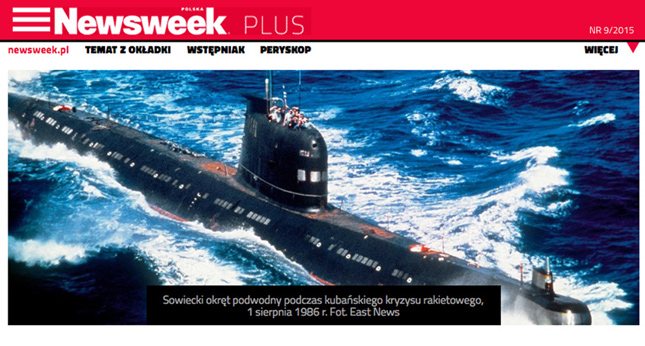
 However, the star turn for raising awareness of ‘Underwater Hunters’ has to be Piotr Wloczyk who interviewed me for an expansive Q&A interview on topics related to the Cold War under the sea. This was published in
However, the star turn for raising awareness of ‘Underwater Hunters’ has to be Piotr Wloczyk who interviewed me for an expansive Q&A interview on topics related to the Cold War under the sea. This was published in 
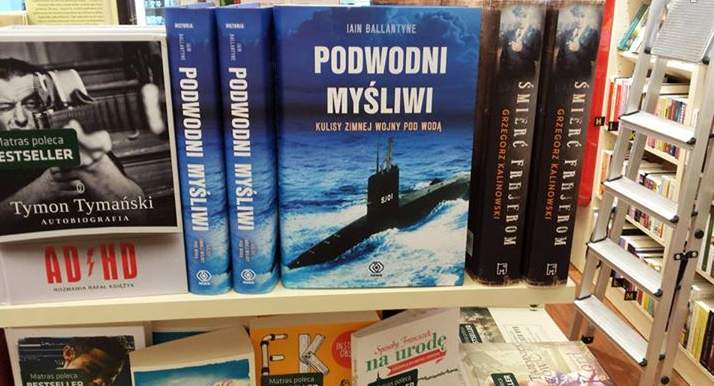 ‘Underwater Hunters’ on sale in Lublin
‘Underwater Hunters’ on sale in Lublin